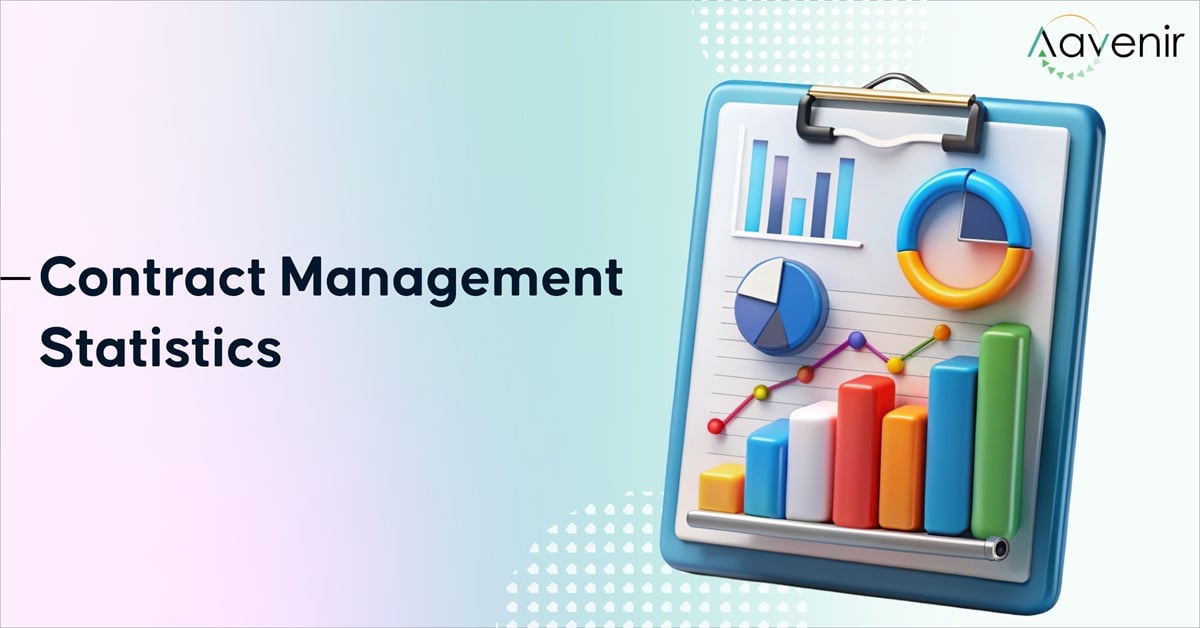The contract management landscape is shifting fast.
Technological advancements and tighter regulations demand enterprise teams to rethink how they manage agreements. Falling behind could cost time, money, and opportunities.
Conversely, enterprise teams that adapt to new trends and technologies can streamline workflows, strengthen compliance, and gain a strategic edge.
This article will examine 16 key contract management statistics, highlighting emerging trends and best practices. These numbers provide insights to inspire your team and optimize your workflow.
16 Key Contract Management Statistics for 2025
We’ve explained the significance of each statistic and recommended the right course of action for adapting to these evolutions.
1. CLM Market Size to Reach USD 3.69 Billion by 2032
The projected market size of $3.69 billion by 2032 demonstrates a steady increase in demand for comprehensive Contract Lifecycle Management (CLM) solutions for organizations.

Significance: This increasing contract management market size indicates that companies are focused on streamlining their contract management workflows and processes. Several factors, such as the demand for efficient execution, stringent compliance standards, and scalability, have inspired teams to invest in CLM software.
Additionally, these solutions can help large enterprise teams to reduce bottlenecks, eliminate data silos, and enable end-to-end visibility for all parties involved.
Action point: Organizations should, therefore, invest in comprehensive CLM solutions to centralize contract storage, automate approvals, and provide real-time analytics. Earlier adoption and iterative implementation can make the workflow upgrade seamless, especially for established teams.
2. Humans Take 92 Minutes on Average to Review a Contract
Contract review takes about 92 minutes for professionals in experienced contract management teams, such as enterprises' legal departments.

Significance: It shows how complex contracts and the processes surrounding them have become. Organizations potentially lose an hour and a half per day per contract review!
Moreover, although the task is routine, it demands keen attention to detail, which greatly reduces productivity. This translates into fewer resources for strategic initiatives, such as connecting with stakeholders to elevate relationships.
Action point: AI-powered CLM solutions can automate administrative tasks during the contract review process, such as checking the party details and format correctness. This allows teams to focus on unique areas of the contract, such as obligations and considerations, saving time.
Moreover, you can extract specific details from your contracts for a more granular evaluation.
For instance, Aavenir Contractflow, an industry-leading AI-enabled CLM solution, can extract contract metadata and clauses, detect deviations, and provide suggestions to improve the contract.
Aavenir can help contract management teams review contracts faster while increasing productivity and reducing errors in the process.
3. 41% Cite Increased Volume and Complexity as a Top Challenge in CLM
The biggest roadblock to managing contracts efficiently is their complexity, with 41% of organizations reporting it.
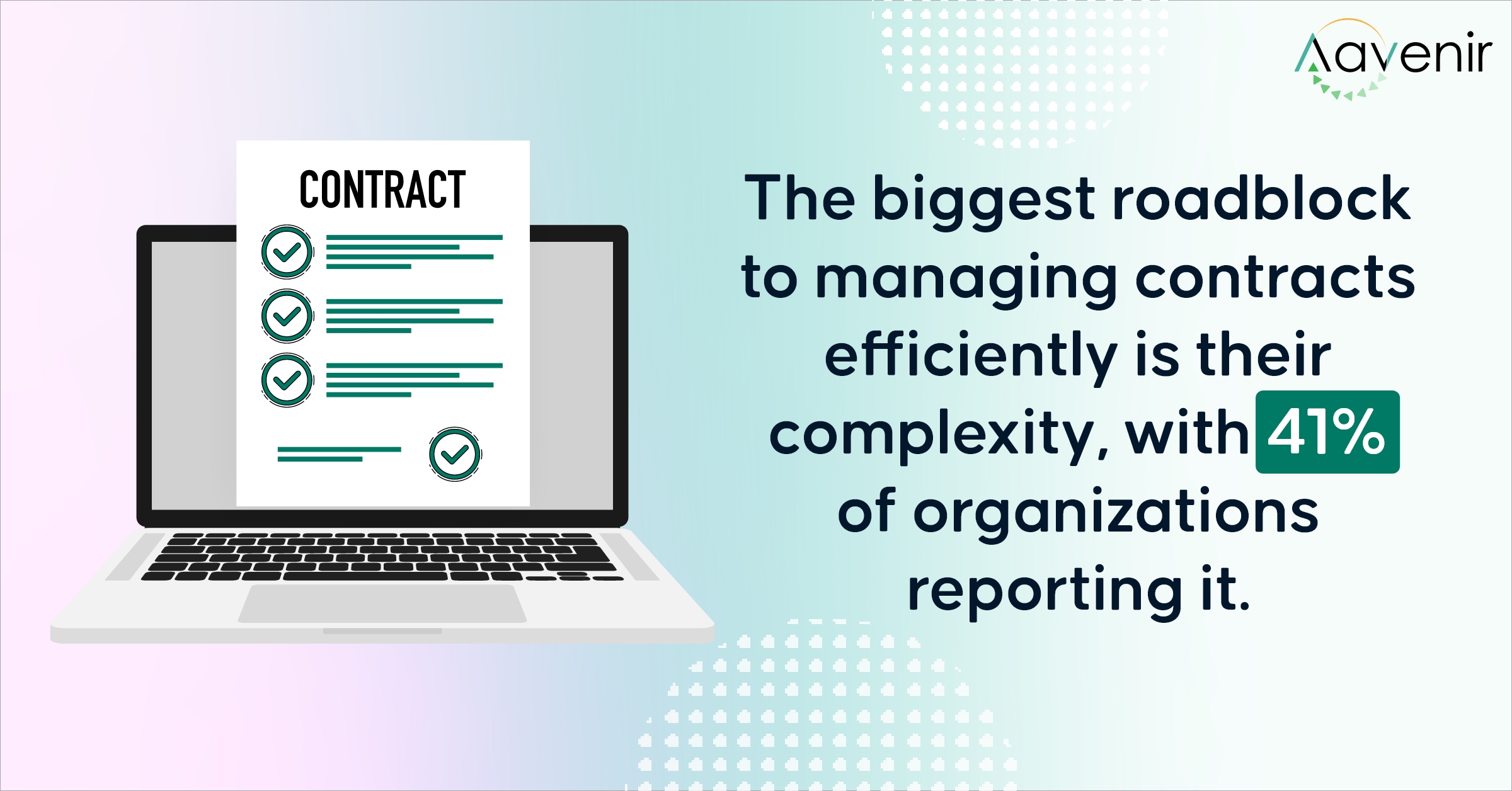
Significance: Contracts are becoming more nuanced as business scenarios become more diverse. Stakeholders want to ensure all boxes are checked to minimize risks while optimizing resources.
This also lengthens the contract management lifecycle with more approval stages and review cycles in the loop. Consequently, teams can only manage a handful of contracts, restricting scalability and profitability simultaneously.
Action point: Given the challenge's significance, enterprise teams should build robust contract management systems that centralize workflow and standardize templates.
Centralized contract management systems allow all stakeholders to collaborate on a single platform.
This ensures transparency and accountability throughout the lifecycle. Additionally, multiple teams will monitor a contract's status, reducing the chances of anything getting buried in transit.
Standardized templates do two things: They create contracts faster and simplify the review process. Organizations can also complement these templates with pre-approved clauses to speed things up further.
This will bolster compliance monitoring, as vague or illegal clauses can be easily detected, especially with AI-enabled solutions like Aavenir Contractflow.
4. 8.6% Erosion of Contract Value on Average
Inefficiencies in contract management processes can cost organizations 8.6% of the total value.
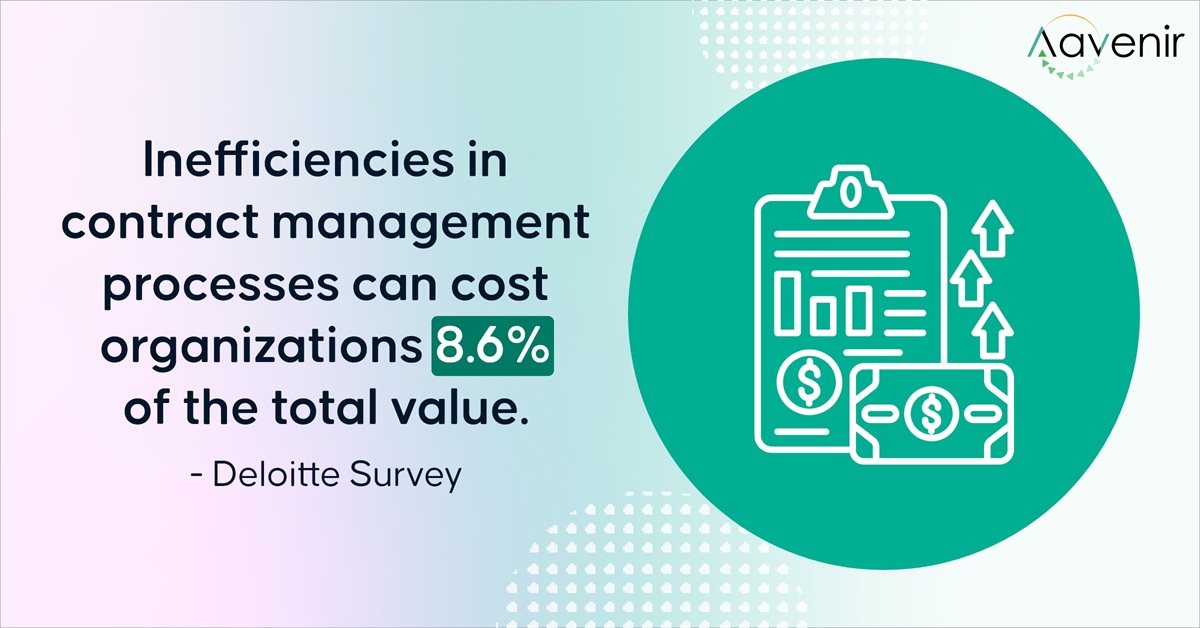
Significance: Missed obligations, unclear clauses, and improper milestone tracking can directly impact profitability. They also affect long-term revenue by straining vendor and customer relationships.
Suboptimal contract management workflows exist for various reasons, such as a lack of visibility into the terms and inefficient collaboration methods.
Action point: Monitoring the overall workflow performance minimizes revenue leakage and preserves contract value. This will reveal bottlenecks and opportunities, which can be leveraged appropriately to optimize the contract lifecycle.
Aavenir Contractflow can extract obligations using AI and assign them as action items, simplifying task management. Internal and external teams can track progress and remain proactive to address potential issues quickly.
Real-time insights into contract performance and agility through Aavenir Contractflow can help organizations preserve contract value over time.
5. 60% Now View Contracts as More Important Than Before
As per a WorldCC report, 60% of enterprises realize the role of contracts and view them as strategic assets that drive revenue, minimize risk, and ensure compliance.
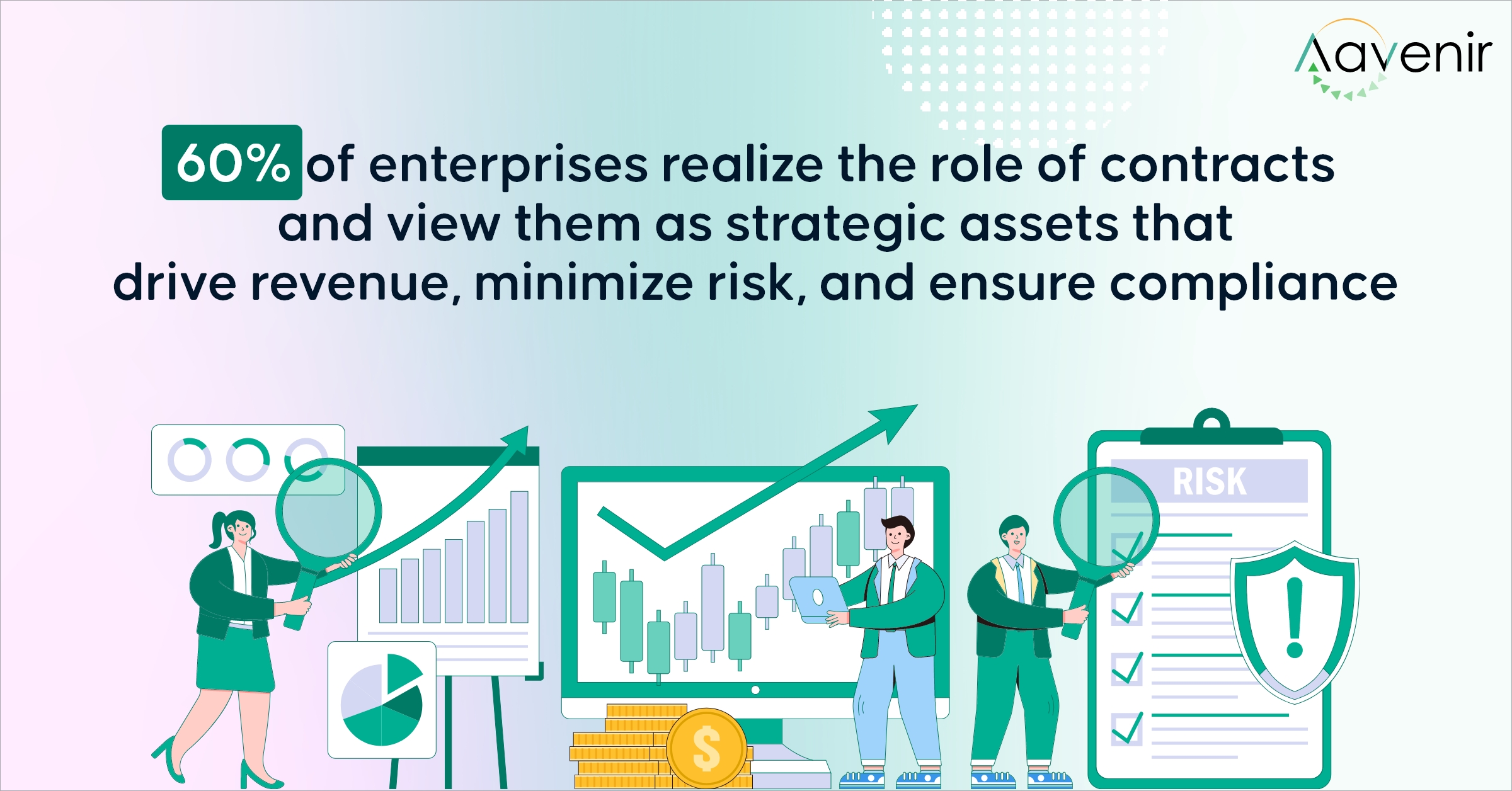
Significance: Contracts have evolved to be more than legal facilitators. Organizations leverage contracts to collaborate, stay compliant, and enforce obligations. Moreover, stakeholders can achieve peace of mind by knowing their interests are protected.
This translates to more attention on contracts and the processes around them throughout their lifecycle. Consequently, errors and oversights could have more pronounced consequences.
Action point: Educating teams within the organization is crucial to elevate the importance of contracts. This will enable vigilance on behalf of stakeholders to continually enhance the CLM workflows.
Additionally, the commonly recognized importance of contracts is key for securing executive buy-in for AI-powered CLM solutions, which are crucial for elevating the entire contract management process.
6. 81% Have Plans to Implement Contract Automation
As contracts become increasingly complex, 81% of organizations actively seek automation opportunities, as per a WorldCC research.
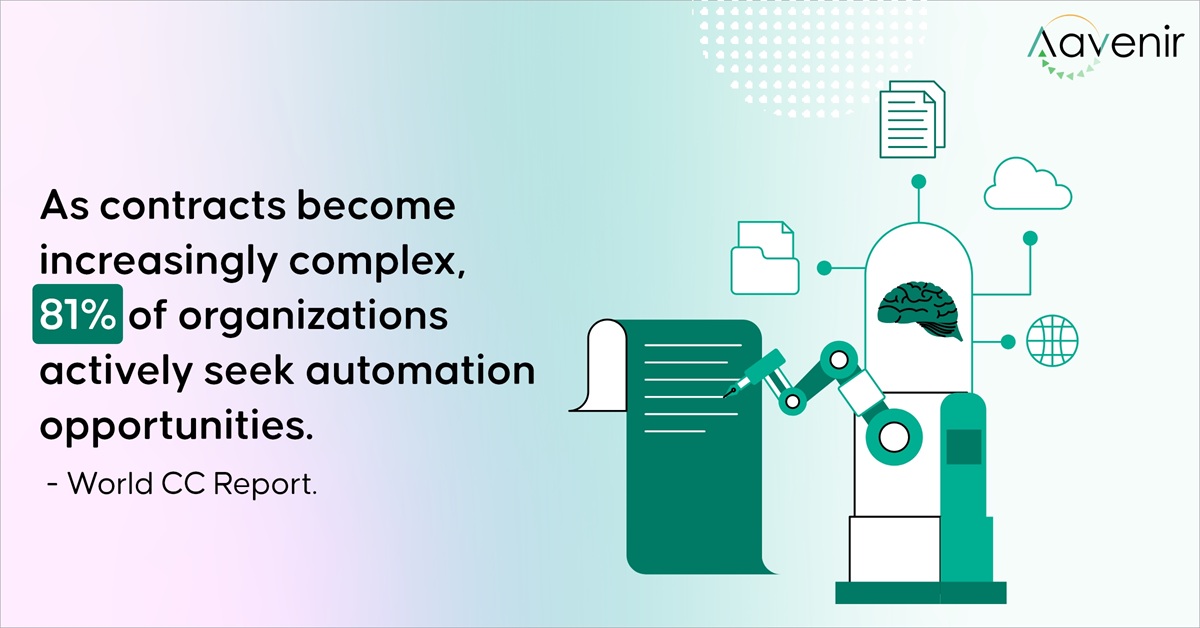
Significance: Teams are adapting to current market conditions. Currently, business scenarios demand agility and efficiency from all stakeholders. That could be difficult to achieve if administrative tasks bog down professionals.
It also suggests that more investment and effort should be made in adopting CLM software. Enterprises are open to modifying their existing workflows to allow effective automation of regular tasks, as the first statistic on this list proves.
Action point: Organizations should audit their current contract management workflow to discover opportunities for automation. For instance, specific tasks in the drafting or reviewing phases could be outsourced to machines.
Enterprise-grade CLM automation solutions like Aavenir Contractflow can take over tasks like contract authoring and compliance monitoring. Its advanced AI-powered automation features, such as contract performance analytics, can be iteratively integrated into the existing workflow.
7. 47% Experiencing More Contract Management Demands
47% of enterprises face increased contract management pressure due to CLM workflows' growing needs and complexity.
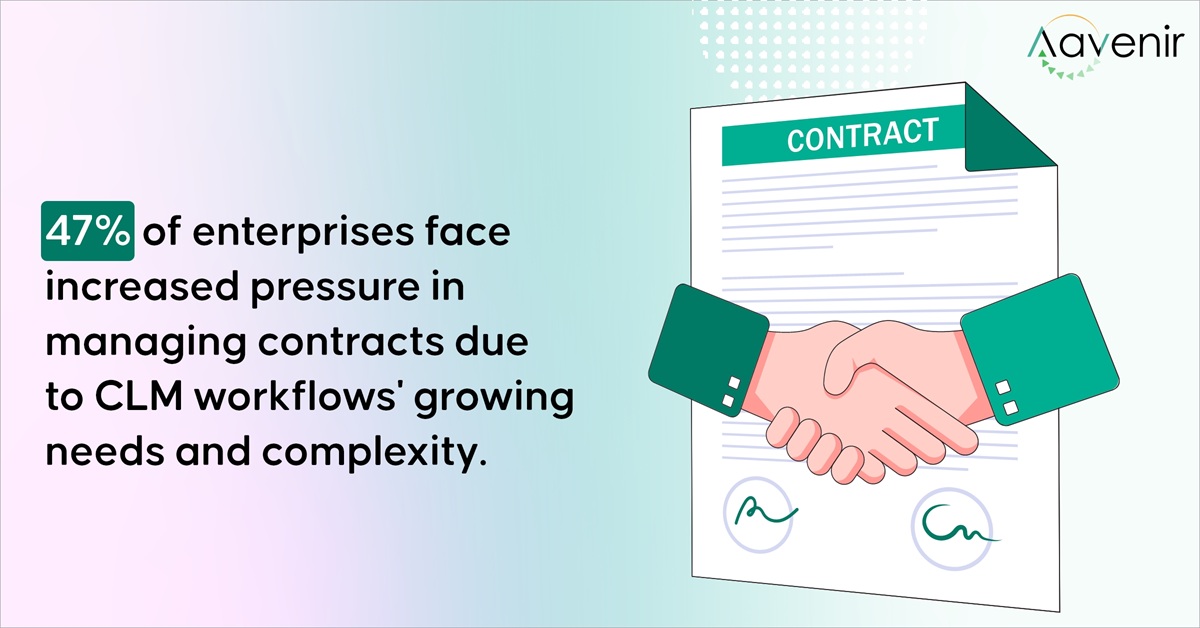
Significance: Nearly half of all organizations are straining their resources to maintain speed and efficiency while managing contracts. This leaves little room for audits, evaluations, or even minor oversights.
The intricate contracts in modern business deals demand careful attention and analysis to ensure appropriate execution. Contract management teams, therefore, must prioritize tasks efficiently to ensure milestones are reached on time.
Action point: Operating constantly in such high-pressure situations can increase the possibility of mistakes. Therefore, it is essential for organizations to simplify their processes or increase their capacity during contract management.
Teams can map out their current workflow to isolate bottlenecks and implement software to alleviate these roadblocks. Aavenir Contractflow, for instance, can speed up authoring, reviewing, and tracking workflows through AI-powered automation, helping teams manage higher workloads effectively.
8. 67% Will Have a Budget for Contract Tools in the Coming Year
As contract management teams realize the importance of running their workflow on cutting-edge software, 67% will translate it into increased investments next year.
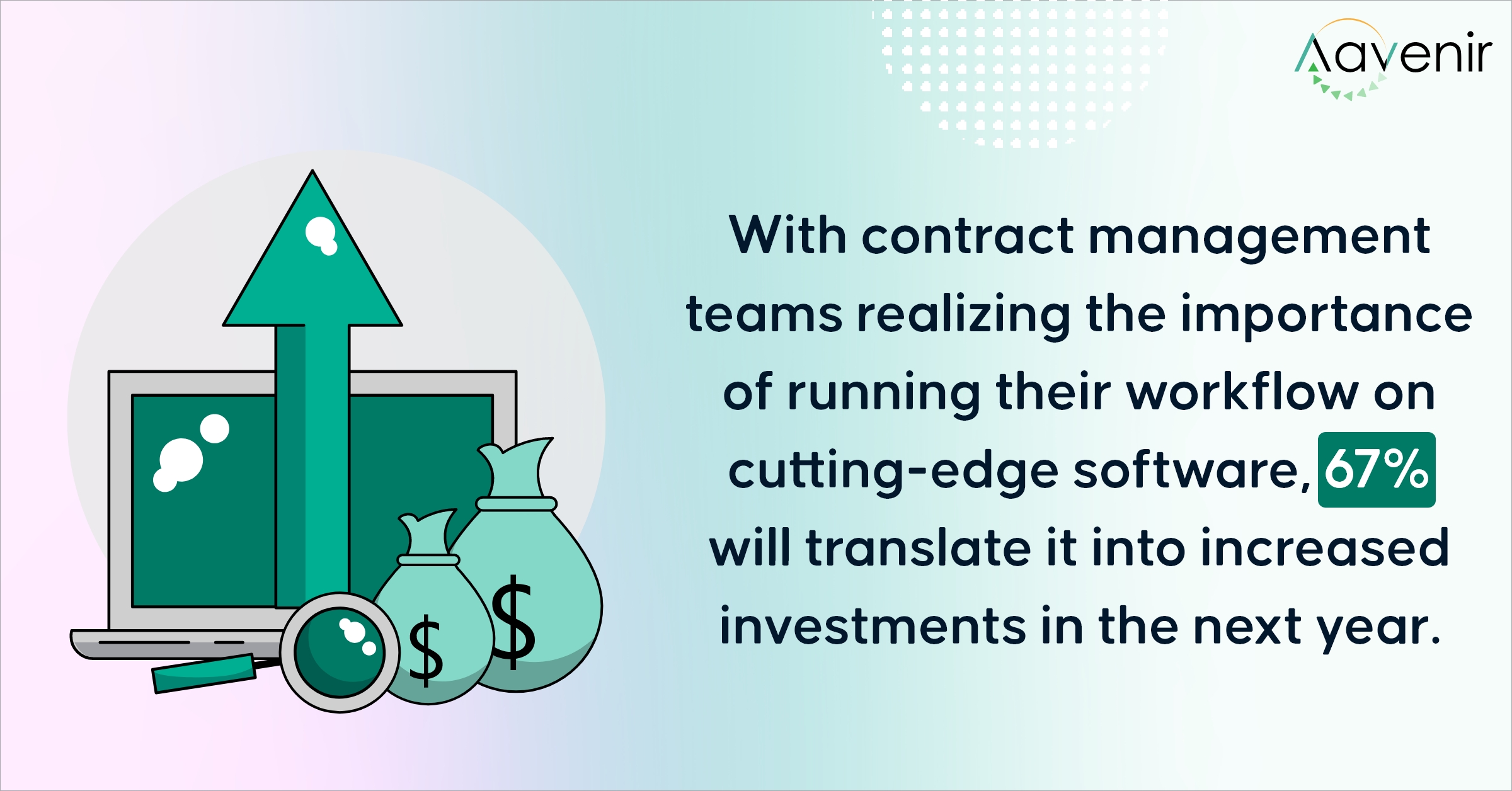
Significance: Unlike traditional businesses, modern enterprises adapt quickly to evolving needs. Teams understand that managing complex contracts at scale while ensuring performance requires the latest technology.
Furthermore, this also strengthens stakeholder relationships, suggesting commitment toward innovation in tools and processes.
Action point: Given this apparent trend, backed by other CLM statistics (on this list), teams should justify such an investment first rather than simply following suit. Decision-makers can start by evaluating available tools to identify how they can elevate existing workflows.
The enhancement can be translated into tangible metrics, such as time saved per contract and reduction in revenue leakage. This information will help find the correct fit that meets the needs of the hour and caters to users’ preferences.
9. 51% of Legal Professionals Spend 30%+ of Their Time on Contracting
51% of legal professionals spend about a third of their time on contract drafting, clause review, and negotiation tasks.
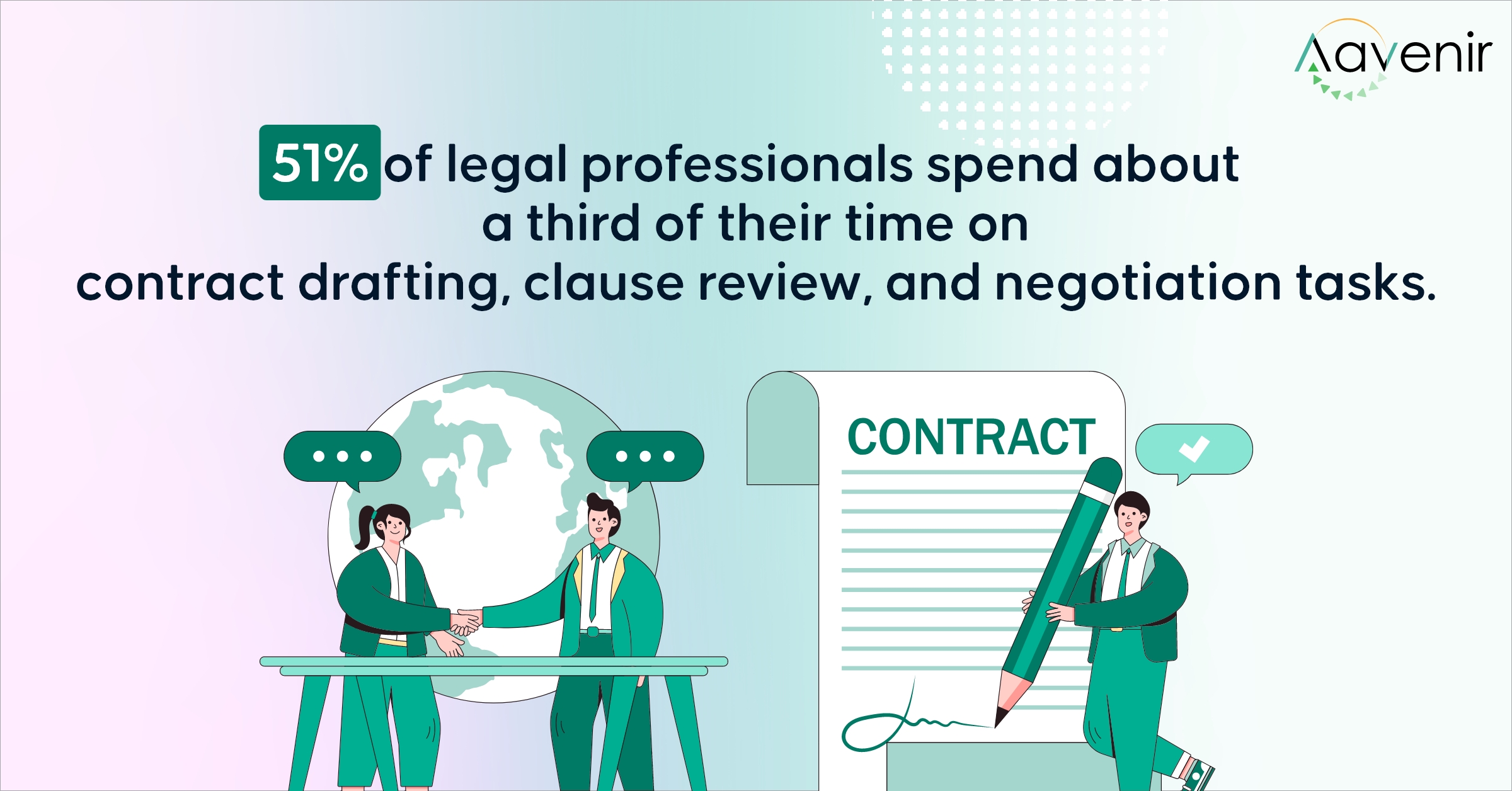
Significance: Much of the day is spent away from fulfilling obligations, optimizing contract management processes, and strengthening stakeholder relationships. This can strain legal resources and affect an organization’s ability to handle conflicts on time.
Strategic risk mitigation and operation policy creation are managed with limited resources, affecting their efficacy and reliability.
Action point: Legal and other teams in enterprises can leverage contract clauses and pre-approved clause libraries to streamline contracting tasks. Professionals can efficiently wrap up repetitive tasks while maintaining consistency in contract language.
Aavenir Contractflow enables organizations to create templates and clause libraries and use AI to spot deviations or ambiguities. This allows legal and other departments to focus on critical areas of contracts, such as considerations and offers, rather than validity.
10. 61% Have Not Yet Adopted AI in Contracting
Despite the availability of comprehensive CLM software like Aavenir Contractflow, 61% of organizations have yet to adopt AI-powered solutions.
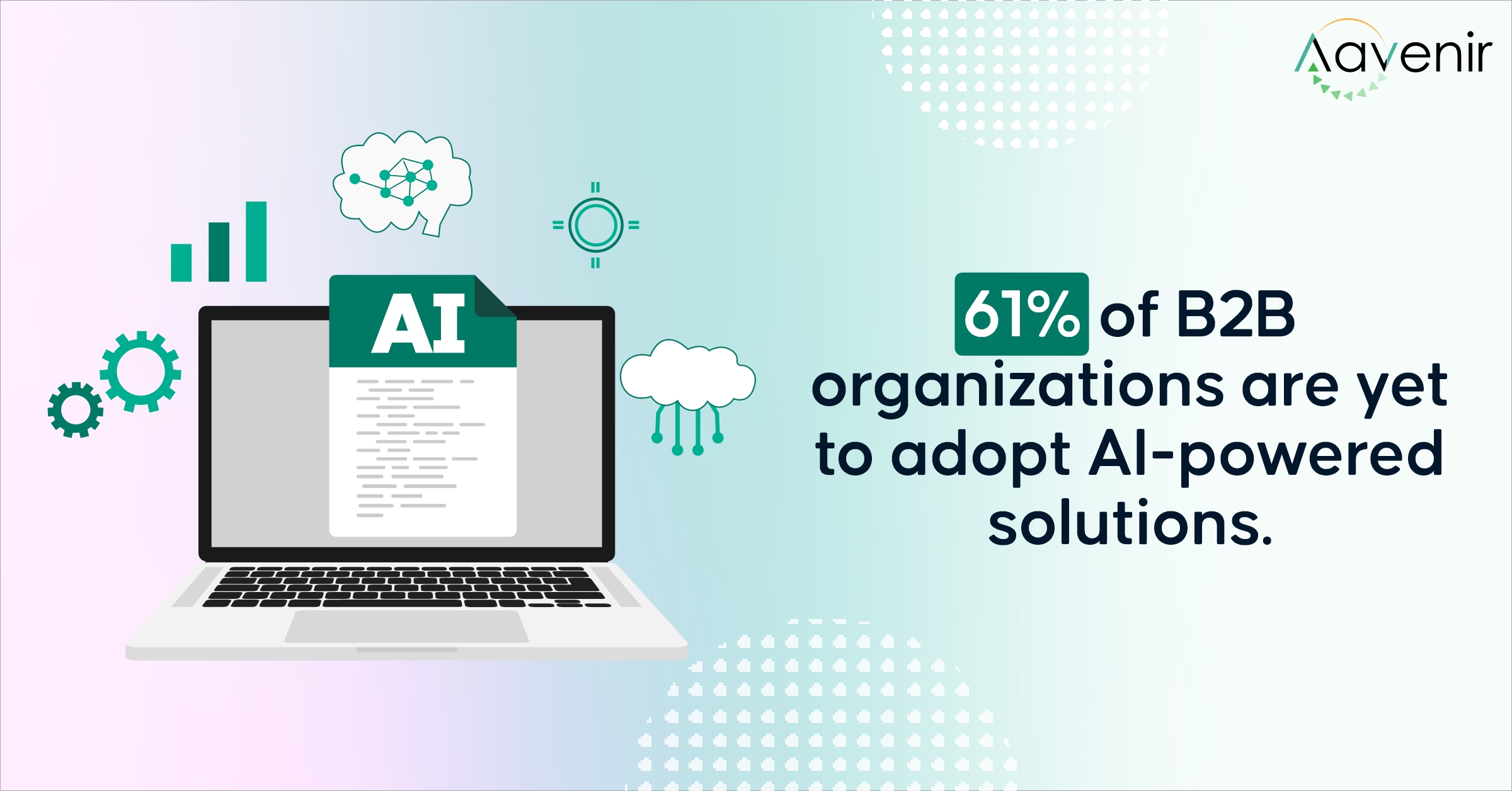
Significance: Early adopters can gain a substantial advantage in their industry by implementing advanced software into their contract management workflows. Since most enterprises still rely on traditional methods to handle contracts, this can be considered an easy win.
There can be various reasons for this. Resistance to change, strict or unique compliance requirements, or de-prioritization toward AI initiatives could have led to this trend.
Action point: Regardless of what’s holding different enterprises back, others should capitalize on this opportunity to upgrade their tools and processes. Teams can begin by piloting AI solutions to automate key tasks like metadata retrieval and clause extraction.
Integrating these solutions iteratively into established processes will increase productivity while minimizing disruptions. This will help contract management teams realize the value of AI-powered workflows and streamline their adoption further.
11. 17% of Organizations Have Banned Generative AI; 31% Have Guidelines
17% of enterprises have abolished the usage of generative AI solutions, while 31% have established rules for their application.
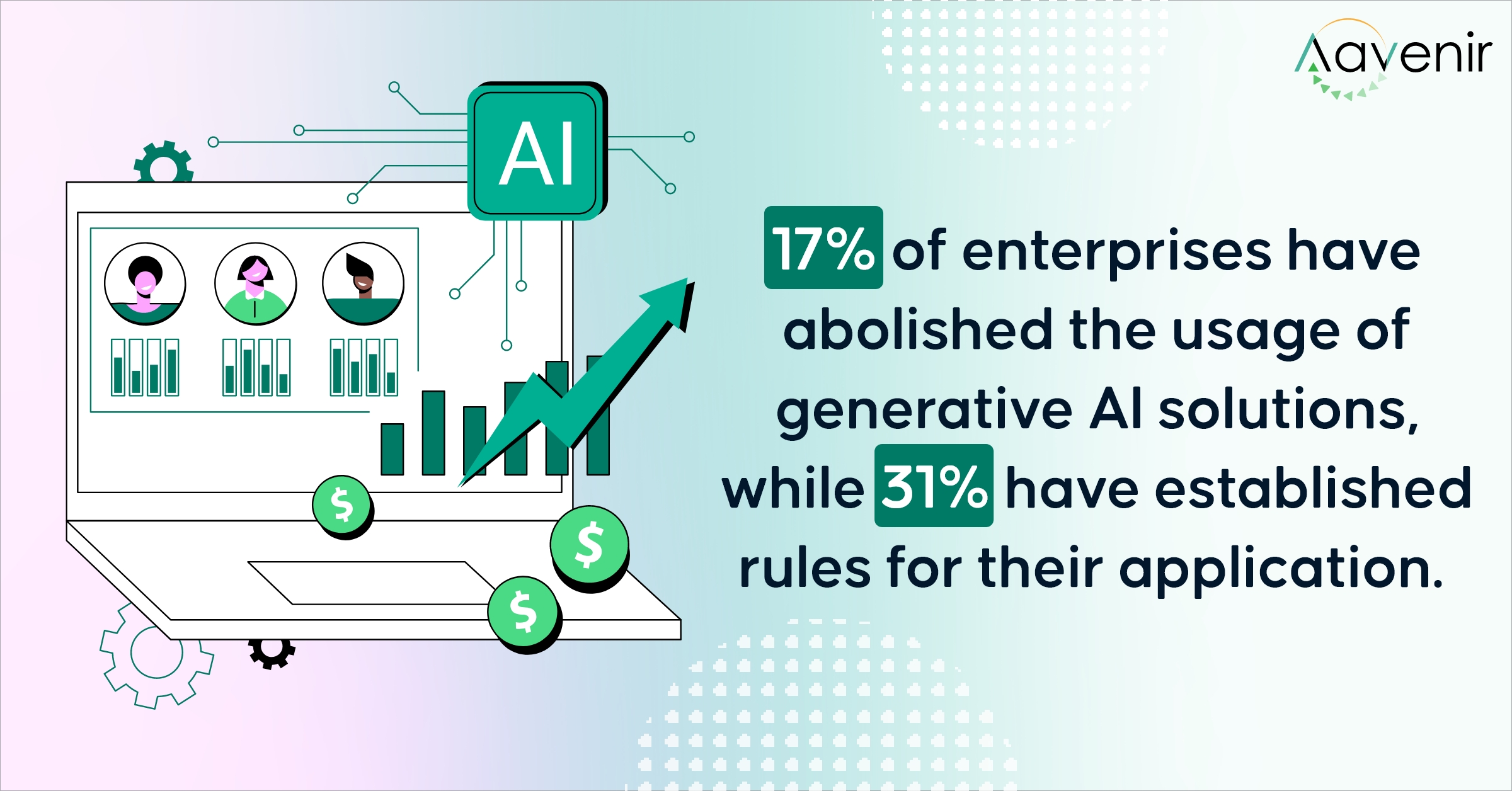
Significance: While AI offers excellent opportunities in terms of productivity and scalability, its adoption should be measured because it’s largely untapped.
Implementing the latest AI-enabled CLM solution can be tempting to keep up with the competition. However, teams must exercise caution when leveraging these advanced technologies to ensure privacy and compliance.
Action point: Like any other software in a contract management workflow, AI-powered solutions should be thoroughly scrutinized. Testing cutting-edge solutions on specific projects before moving toward enterprise-wide adoption is a good practice.
For instance, piloting innovative AI-powered assistants for contract managment like Avy to summarize contracts, extract specific details, etc., will give teams a feel of the tool. This makes it easier to evaluate the efficacy of a solution for an organization’s needs.
12. Biggest AI Adoption Obstacle: Security & Privacy (25%), Followed by Low Prioritization (18%)
The top two reasons organizations are hesitant to adopt AI-enabled CLM software are security and privacy concerns (25%) and low prioritization by the decision-makers (18%).
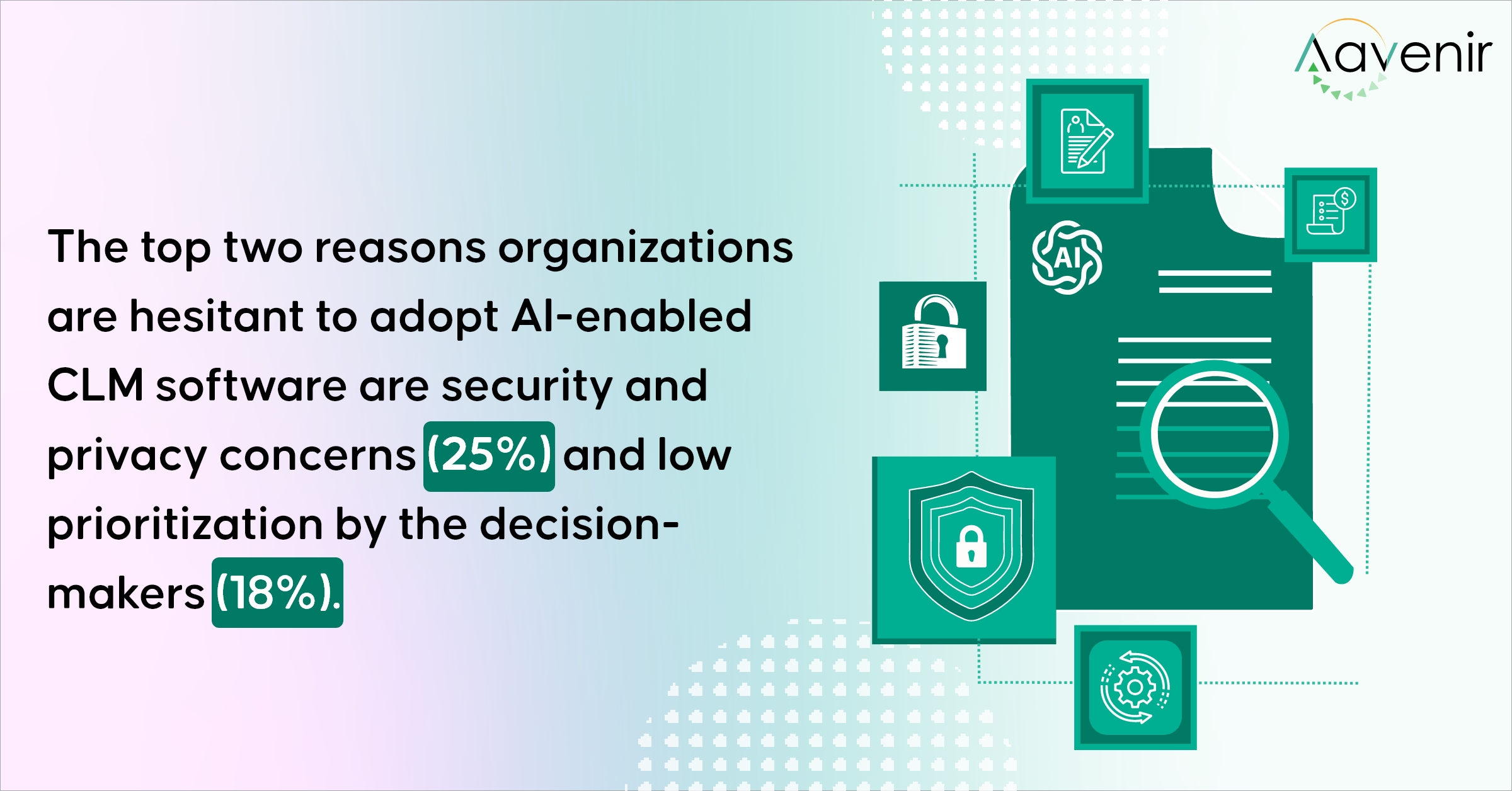
Significance: These challenges are expected, considering how essential compliance with data safety laws is. At the same time, businesses should be aware of enterprise-grade AI-powered CLM solutions like Aavenir that comply with various regulations such as HIPAA and GDPR.
The de-prioritization of AI initiatives could stem from a lack of faith in the returns of these innovative solutions and other operational bottlenecks, such as resource constraints.
Action point: Enterprises should double-check compliance with AI-powered contract compliance management software before adoption to protect their stakeholders' data and privacy. Additionally, teams can consider local or custom AI models for further security.
Teams can present proven applications of this advanced software to illuminate the importance of AI in contract management and eventually secure executive buy-in. This will facilitate transparent knowledge exchange, leading to the prioritization of AI transformation efforts.
13. Major AI Use Cases: Metadata Extraction (44%), Clause Extraction (39%), Contract Analytics & Automation (38%)
The most common uses of AI in CLM workflows are metadata extraction (44%), clause extraction (39%), and contract analytics & automation (38%).
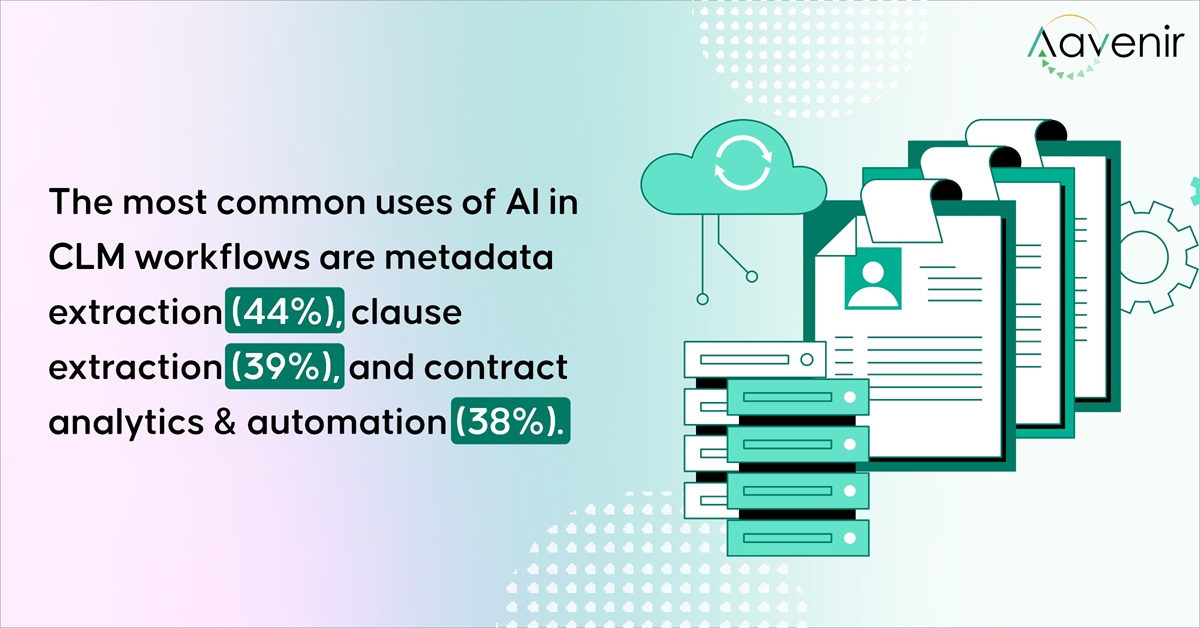
Significance: Teams gradually include AI in their contract management processes by targeting simple, repetitive tasks. For instance, manually finding something specific in a contract could be time-consuming.
An effective way to do this quicker is to leverage generative AI models that intuitively search through contracts or related documents. Users can enter their queries in natural language, making their adoption even more streamlined.
Action point: Enterprise contract management teams should audit their CLM workflows to discover low-hanging fruit regarding AI transformation. Tasks like checking contract status and validating clauses can be easily offloaded to AI.
Then, organizations can start testing compliant AI contract assistants for these use cases, such as Avy, by Aavenir. Avy can summarize contracts, simplify clause language, and fetch specific information from large documents in seconds.
14. 68% Cite Time Reduction as AI’s Biggest Advantage
68% of the organizations leveraging AI-enabled contract management software agree that time savings are the most significant advantage.
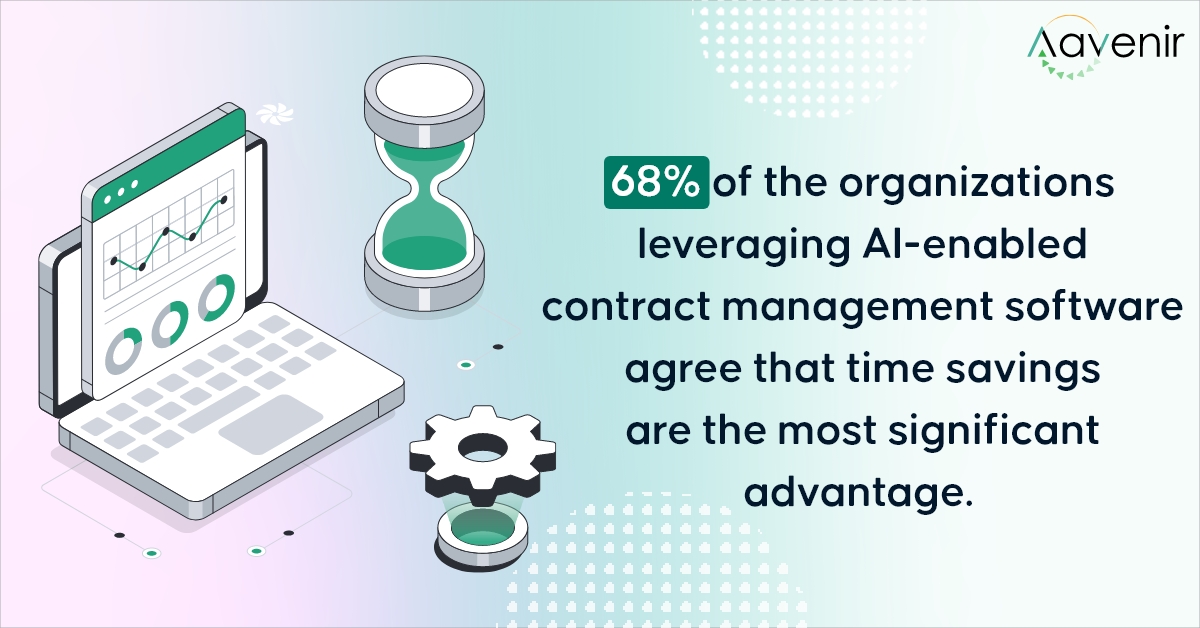
Significance: One of the most significant merits of integrating AI into contracting processes is speeding up tedious tasks. Any typical CLM process has multiple administrative action items that demand keen attention to detail while being simple and repetitive.
These tasks, when automated through AI-powered CLM solutions, save professionals hours while handling contracts.
Action point: Integrate AI into contracting workflows where quick turnarounds make the biggest impact on time saved. This can include drafting, reviewing, and data extraction.
Additionally, it is beneficial to use centralized AI-enabled CLM software that brings these advanced capabilities to multiple departments and stakeholders. Aavenir Contractflow, built on the ServiceNow platform, does that to help enterprise teams reduce administrative burdens.
The broader goal is to expedite the contracting processes and increase the organization’s overall bandwidth to explore new opportunities.
15. Only 13% Have Clearly Defined Future Plans for AI Contracting
About a tenth of enterprises have well-planned strategies to augment their contracting processes with AI.
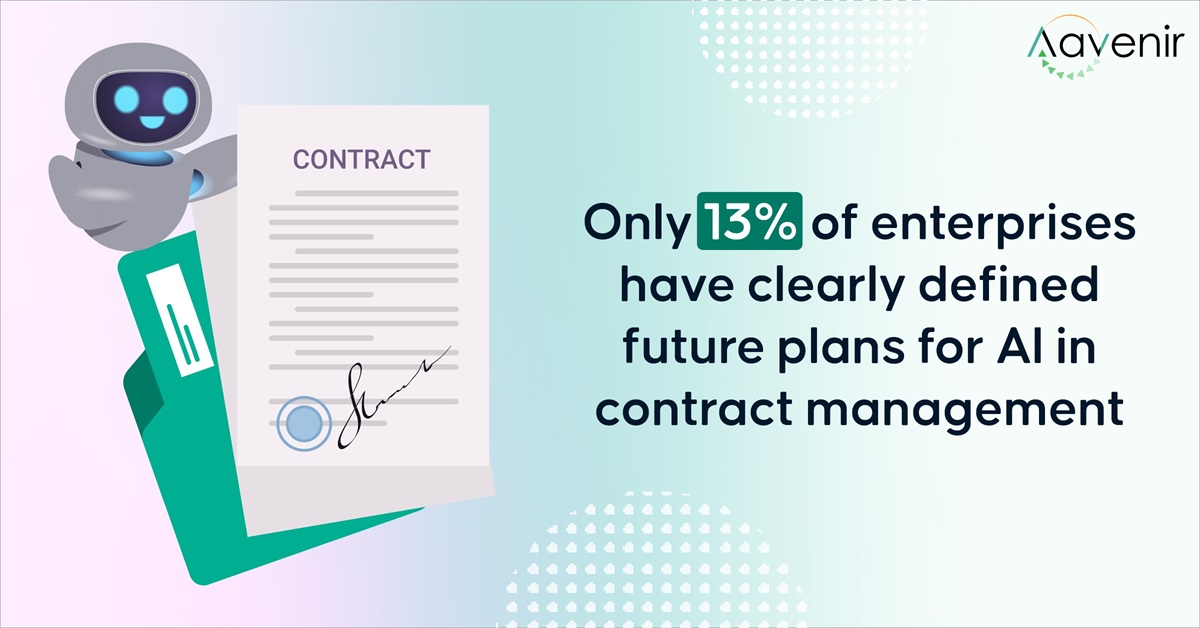
Significance: Like many other statistics on this list, this number reflects how much of an edge agile organizations can look forward to if they adopt AI. Moreover, the implementation of advanced technologies doesn’t need to be extreme.
Action point: Organizations with no plans to integrate AI should start in that direction by initiating internal discussions. Educating stakeholders about the advantages of leveraging machine learning (ML) and AI models in contracting can result in a roadmap for adoption.
Furthermore, modern enterprise-grade AI-enabled CLM solutions like Aavenir Contractflow feature robust integrations with other business tools, such as CRM and ERP systems. Hence, adding them to an existing tech stack is more straightforward, even for large organizations.
16. Half of Procurement Contract Management Will Be AI-enabled by 2027
By 2027, AI-powered CLM solutions will power nearly 50% of contract management activities related to procurement.
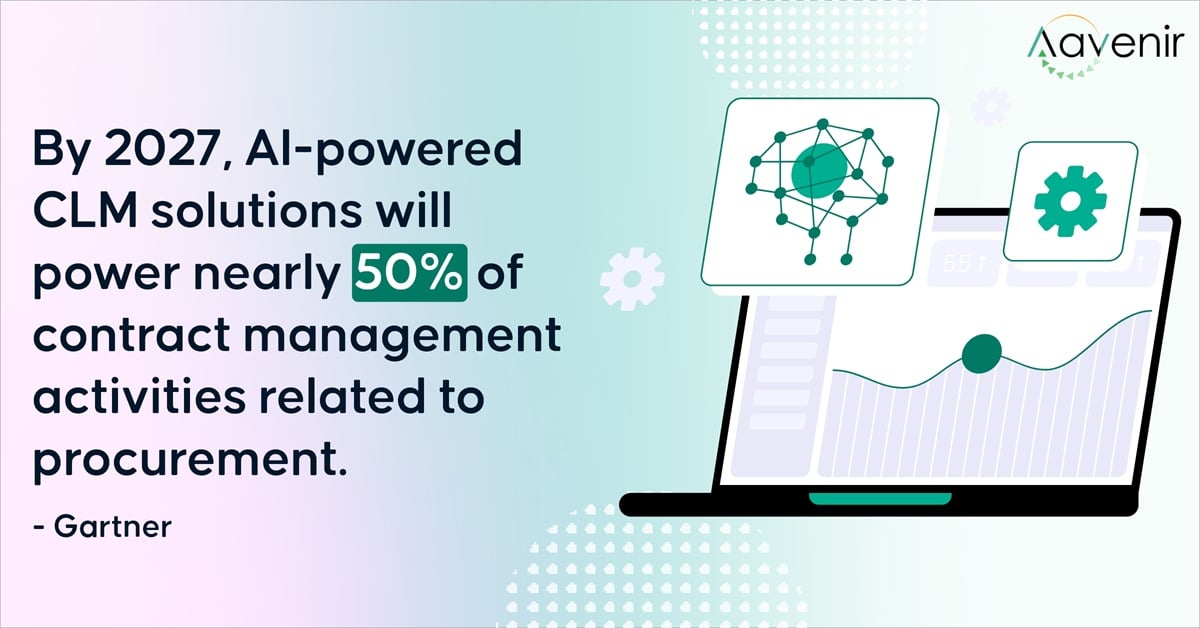
Significance: AI isn’t currently at the top of every enterprise’s priority list regarding digital transformation. However, as companies gradually learn more about AI-powered automation's benefits, the adoption will pick up shortly based on the current trends.
Tasks within procurement workflows for organizations, such as supplier risk assessment, identifying favorable terms, and analyzing spending patterns, can be offloaded to AI. This translates to more resources for strategic initiatives such as relationship management during acquisition.
Action point: Staying ahead of industry trends and realizing early benefits is advantageous rather than catching up to the competition. The first step is to evaluate comprehensive AI-powered CLM solutions like Aavenir, which offers a suite of tools for procurement teams.
Aavenir RFPflow, for instance, simplifies collaboration on RFx documents and reduces cycle times. Similarly, the Connected Contract Management Experience facilitates a quick transition from RFP to contract and expedites the handover to sourcing teams.
Looking Forward: Next Steps for Enterprises
Based on the trends, here are some key insights:
- Contracts are getting more complex and essential due to evolving market conditions, compliance requirements, and stakeholder needs.
- Teams are under greater pressure to execute contracts, as they must manage multiple documents, accommodate nuanced requirements, and follow the necessary protocols.
- Administrative tasks like contract review and authoring are a major cause of inefficiencies in the CLM process, which is why enterprises are urging them to automate them.
- To simplify the contract management workflows and minimize revenue, more organizations will have a budget for CLM solutions in the coming years.
- AI has the potential to take over tedious and repetitive tasks, saving teams time and costs.
- Despite its proven benefits, many enterprises have stopped implementing AI because of security and privacy concerns.
- As teams gradually learn more about advanced, AI-enabled CLM software, they will speed up their adoption in the coming years.
Adopting enterprise-grade AI-powered CLM solutions is crucial to ensuring your organization is ready to navigate the demands of the modern marketplace and stay ahead of trends. The leading contract management software solutions can streamline workflows, enhance collaboration, and minimize risks, making professionals more productive.
Aavenir’s solutions, such as Aavenir Contractflow and Aavenir RFPflow, can address various aspects of contract management and bring AI-enabled features into your current workflow. Moreover, Avy allows anyone to leverage these advanced capabilities through a chat interface, expediting its adoption further.
Ready to see Aavenir in action? Contact us today to book a personalized demo.
Frequently Asked Questions
1. What is the biggest challenge in implementing CLM software?
The biggest challenges in implementing CLM software are overcoming change resistance, integrating it with existing workflows, and gaining user adoption. Proper communication and knowledge transfer are essential to overcoming these roadblocks.
2. How can AI make contract reviews more efficient?
AI can take over administrative tasks like contract reviews, analyzing contract performance, and summarizing documents to save time. This reduces the likelihood of manual errors while freeing up teams’ time for more strategic negotiations and decision-making.
3. Why do organizations worry about privacy and security when using AI?
Organizations fear unauthorized access to sensitive contract data or breaches during processing. Choosing compliant, enterprise-grade AI solutions and implementing robust data protection policies can mitigate these concerns and ensure secure AI adoption.
4. Which parts of the contract lifecycle are best suited for automation?
Automation is most effective in contract drafting, clause extraction, compliance checks, approval workflows, and performance monitoring. These repetitive tasks benefit significantly from reduced cycle times, enhanced accuracy, and consistent output.
5. Is AI adoption in contracting viable for small and medium-sized businesses?
Yes, AI is increasingly accessible for SMBs through scalable, cost-effective tools. These solutions enable SMBs to optimize contract management, improve efficiency, and stay competitive without requiring extensive resources or significant upfront investment.

